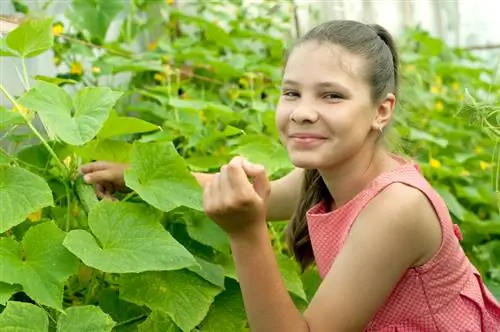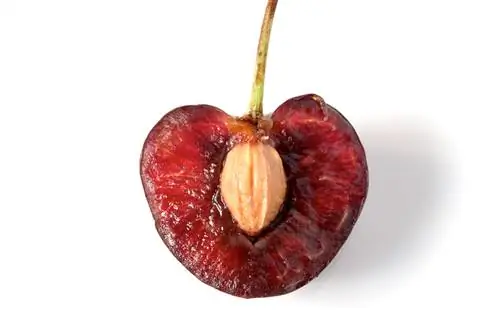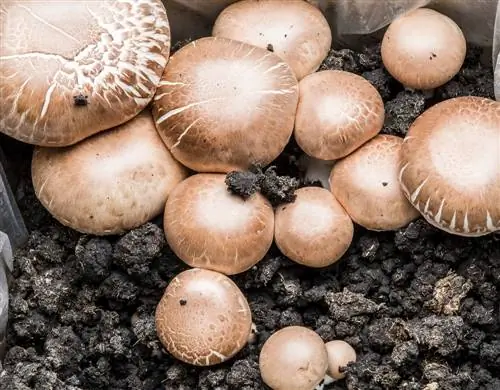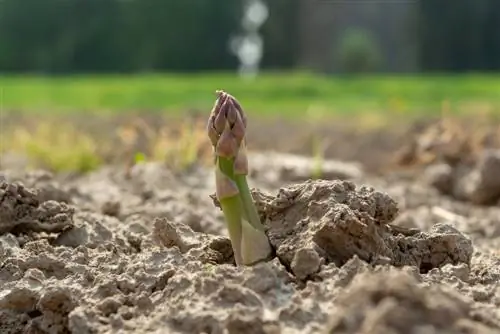- Author admin [email protected].
- Public 2023-12-16 16:46.
- Last modified 2025-01-23 11:22.
If you order wasabi in a restaurant, you don't necessarily get paste made from the real root tuber from Japan. For cost reasons, a green-colored horseradish cream is often offered, which has a sharper taste. With a little expertise, you can try growing it in your own garden.
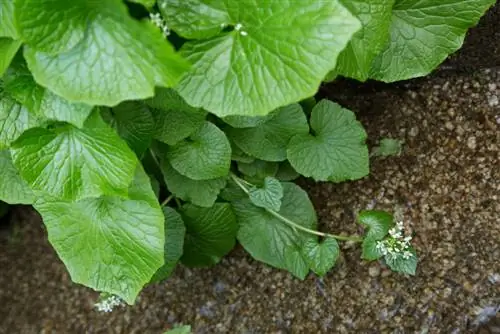
How to grow wasabi root in the garden?
To grow wasabi in the garden, you should stratify the seeds, use nutrient-poor potting soil and plant young plants in moist locations without direct sunlight. The plant requires regular watering, liquid fertilizer and a planting distance of 30 cm.
Sowing
Stratify seeds in the refrigerator for 60 to 90 days to encourage germination. Then let the seeds soak in water before spreading them out on a nutrient-poor potting soil and pressing them lightly. For good germination results, you must keep the substrate evenly moist. An occasional splash of water mimics Eutrema japonicum's natural habitat, which is along streams and rivers.
Planting out
The young plants find good growth conditions outdoors or in a pot if the environmental conditions are right. The bank areas of streams or garden ponds serve as optimal locations. A planting distance of 30 centimeters between the individual plants is important so that they can develop without restrictions.
Location requirements:
- does not like direct sun, north-facing gardens are ideal
- Temperatures from eight to 20 degrees
- nutrient-rich and humus-rich substrate, preferably containing clay
- moist but not waterlogged soils
Care and harvest
Wasabi requires consistent soil moisture, so you should ensure regular watering. The Japanese vegetable plant does not tolerate dry periods. An occasional application of liquid fertilizer accelerates development. The root survives mild winter months with temperatures in the single-digit minus range well. If you want to be on the safe side, you should cover the bed with a garden fleece (€34.00 on Amazon). In spring, late frosts can damage the newly emerging leaves.
Harvesting wasabi
It can take up to three years for a stalk that is ready to be harvested to develop. You should not harvest Japanese horseradish until the plant divides. In this way you ensure the continued existence of the plants you have laboriously grown. Leaves and flowers can be used in the kitchen just like the roots.
Variety variety
There are now some breeding forms that prove to be less demanding than the original species. They can be easily cultivated outdoors in Central European conditions.
Daruma
This variety thrives in normal garden soil and develops richly branched rhizomes. It is popular not only because of its easy-care requirements, but also because of its aromatic taste. In Japan, this breed is cultivated along streams and rivers. Here, the running water provides cooling in summer, while ensuring mild climatic conditions in winter.
Mazuma
These wasabi plants develop short and thick root tubers because they grow comparatively slowly. Mazuma rockets are characterized by robust growth and are rarely affected by diseases. Most young plants from the hardware store come from Mazuma wasabi.
Midor
In Japan, this cultivar is cultivated in a similar way to rice plants. The breeding is fast-growing and thrives in cool temperatures. However, germination proves to be difficult as only a few seeds sprout.



